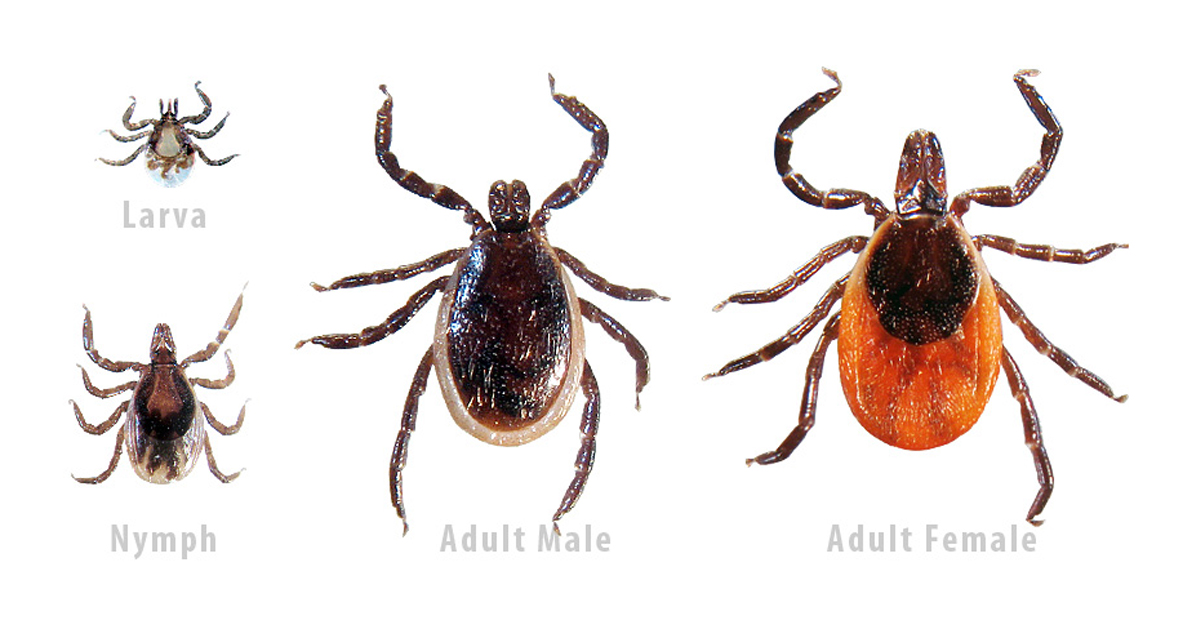Let's talk about ticks. You know ... the tiny, blood-sucking buggers that lie low, clinging to brush and tall grass, just waiting for innocent victims to feed on. It's nothing short of a West Michigan horror story.
More seriously, though, ticks carry diseases—specifically, Lyme disease.
Soley transmitted to humans through the bite of blacklegged ticks, Lyme disease can be prevented by preventing tick bites. Here are a few tips, courtesy of Ottawa County Parks & Recreation and the Ottawa County Department of Public Health.
Know what you're looking for.
Ticks are arachnids. Related to spiders, they also have eight legs and three life stages: larval, nymphal and adult. There are over 20 known species of ticks in Michigan, and many—though not all—harbor dangerous bacteria, viruses and parasites. Only the blacklegged ticks, or deer ticks, transmit Lyme disease. They look like this:

Photo courtesy of TickEncounter Resource Center
Avoid direct contact.
Don't go into the woods! Or beach grass. Or ... yeah, no. Summer is for outside bliss! You don't have to avoid spending time in the great outdoors, but try walking in the center of trails and steering clear of wooded areas with brush, high grass and leaf litter.
Create tick-safe zones in your own yard by keeping patios and play areas away from vegetation, regularly removing leaves, and clearing tall brush and grass. You could also place gravel or wood chips between lawns and wooded areas, or use a chemical control agent.
Use insect repellent.
Apply repellent containing DEET or Picaridin on exposed skin, and treat clothes and gear with products containing 0.5 percent permethrin. NOTE: Don't use permethrin directly on skin.
If you have pets, treat them with tick prevention products.
Get 'em before they get you.
After being in tick-infested areas, conduct a full-body tick check: under arms, behind knees, between legs, around waist, in and around your ears, inside your belly button, and especially in your hair.
Make sure you examine gear and pets, too—and do your laundry as soon as possible. Wash clothing in hot water, and dry on high heat.
If you find a tick, use fine-tipped tweezers. Grasp the tick as close to the skin's surface as possible, and pull upward with steady, even pressure. Don't twist or jerk the tick; it can cause the mouth to break off and remain in the skin. Clean the area with rubbing alcohol, an iodine scrub, or soap and water.
Know the symptoms.
Most cases of Lyme disease can be treated successfully with antibiotics within a few weeks. If left untreated, the infection can spread to joints, the heart and nervous system. Typical symptoms of Lyme disease are flu-like—including fever, headache, fatigue and a skin rash.
Written by Cassie Westrate, staff writer for West Michigan Woman.




